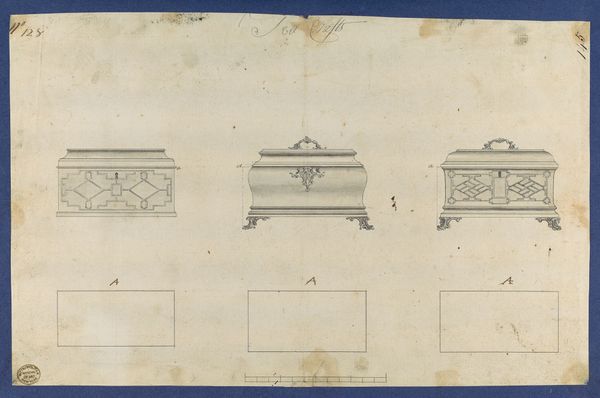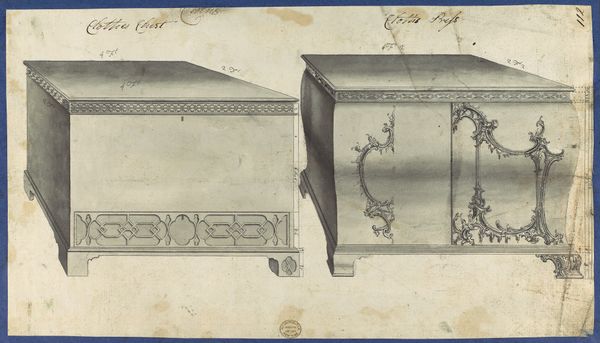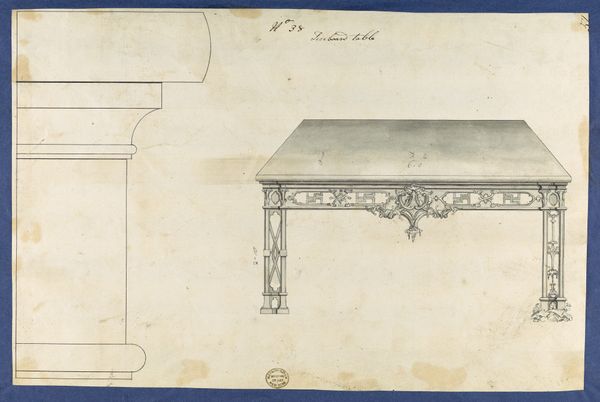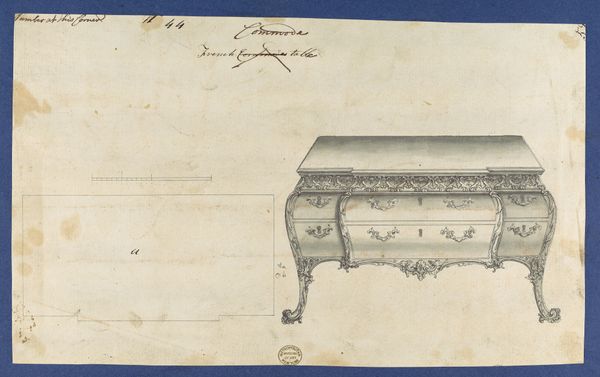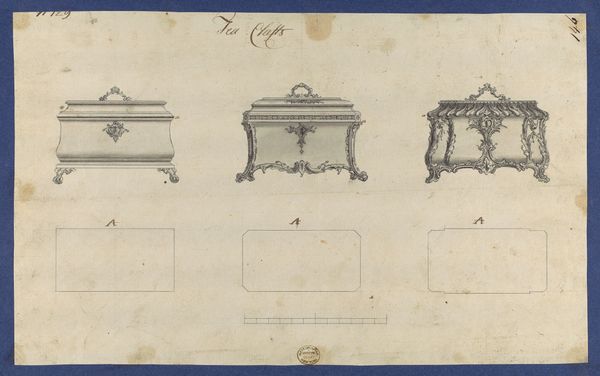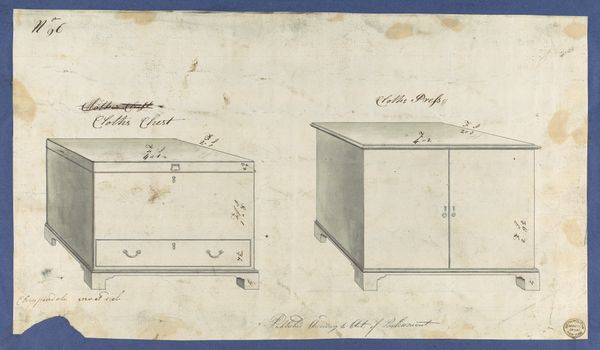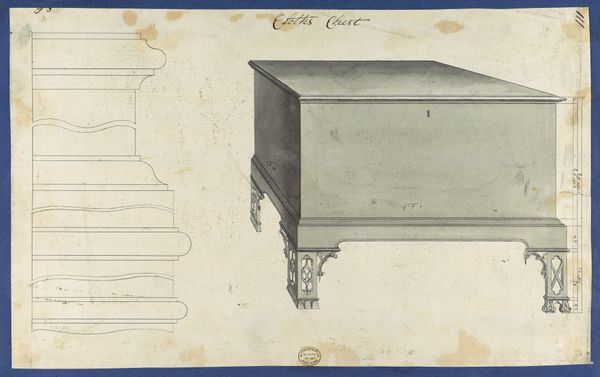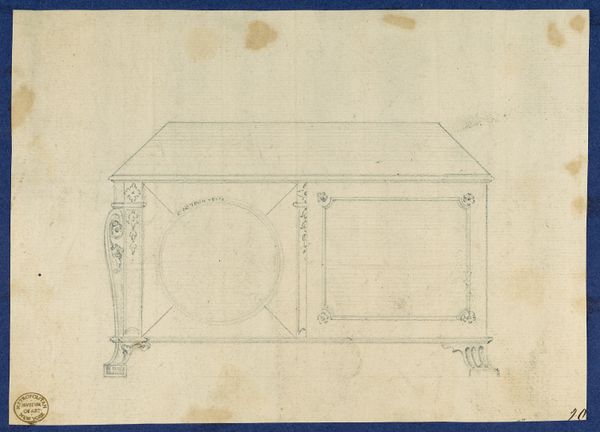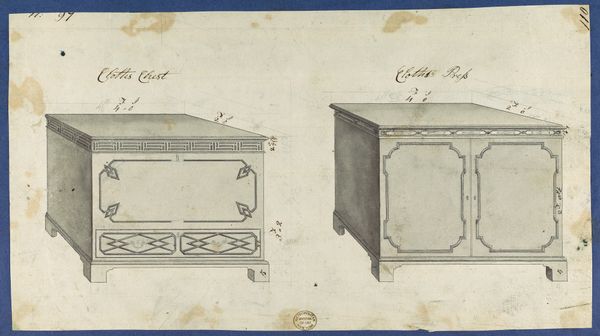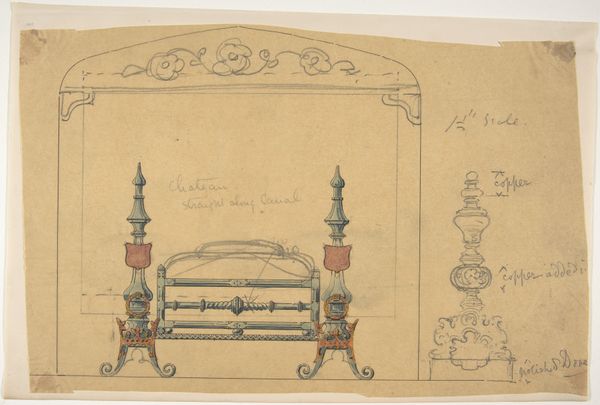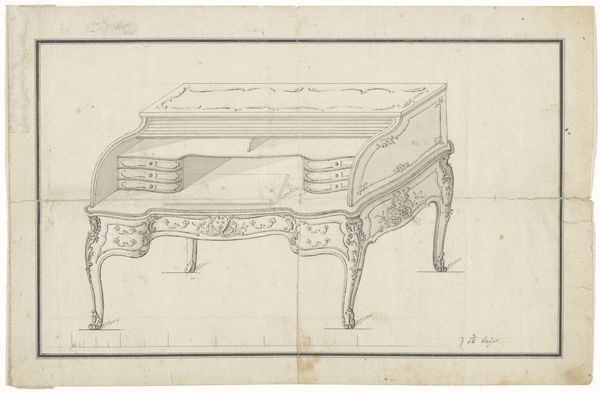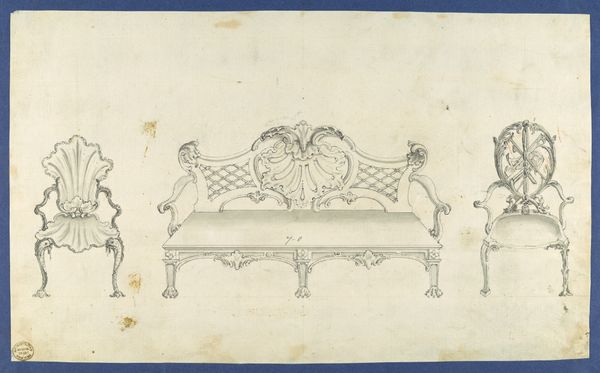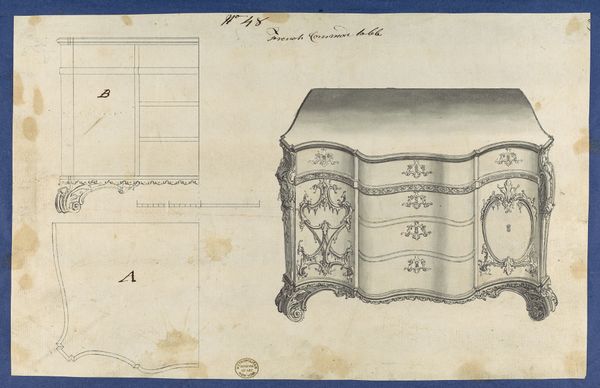
French Commode Table, from Chippendale Drawings, Vol. II 1753
0:00
0:00
drawing, print, pencil, pen
#
drawing
#
baroque
# print
#
pencil
#
pen
#
history-painting
#
academic-art
Dimensions: sheet: 6 7/8 x 12 3/8 in. (17.5 x 31.4 cm)
Copyright: Public Domain
Editor: This is “French Commode Table, from Chippendale Drawings, Vol. II,” created in 1753 by Thomas Chippendale. It’s a drawing using pen, pencil, and print. What strikes me is how it's not just a rendering, but almost a set of instructions. What do you see in this piece? Curator: It’s precisely that functional aspect that interests me. This drawing isn’t about aesthetics in a vacuum; it's about the labor and materiality involved in crafting this object. Consider the social context: furniture like this would have been commissioned by the wealthy, but *made* by skilled artisans. Editor: So you’re saying it highlights the class divisions of the time? Curator: Exactly. The drawing provides insight into the means of production. Think about the access to materials—the quality of wood, the tools needed to carve such intricate details. It was all predicated on wealth and access to skilled labor. Editor: It's fascinating to think of it in terms of labor. How much do you think the drawing itself plays a role? Was this meant as art or as instruction? Curator: That distinction is what I’m questioning. It challenges the boundary between “high art” and craft. Someone painstakingly created this drawing; that's labor too, a specific *type* of labour. Editor: Right. Now, looking closer at the craftsmanship, the level of detail in those curves… were these drawings widely circulated to workshops? Curator: Very likely. These patterns disseminated designs across regions. But this distribution further entrenches the roles within the economic system: a designer like Chippendale at the top, laborers executing the designs in workshops, and wealthy consumers completing the cycle. Editor: That’s given me a completely different perspective on something I would have just seen as a pretty drawing. Curator: Precisely! It allows us to think critically about the structures of power and consumption embedded in even the most seemingly innocuous objects.
Comments
No comments
Be the first to comment and join the conversation on the ultimate creative platform.
